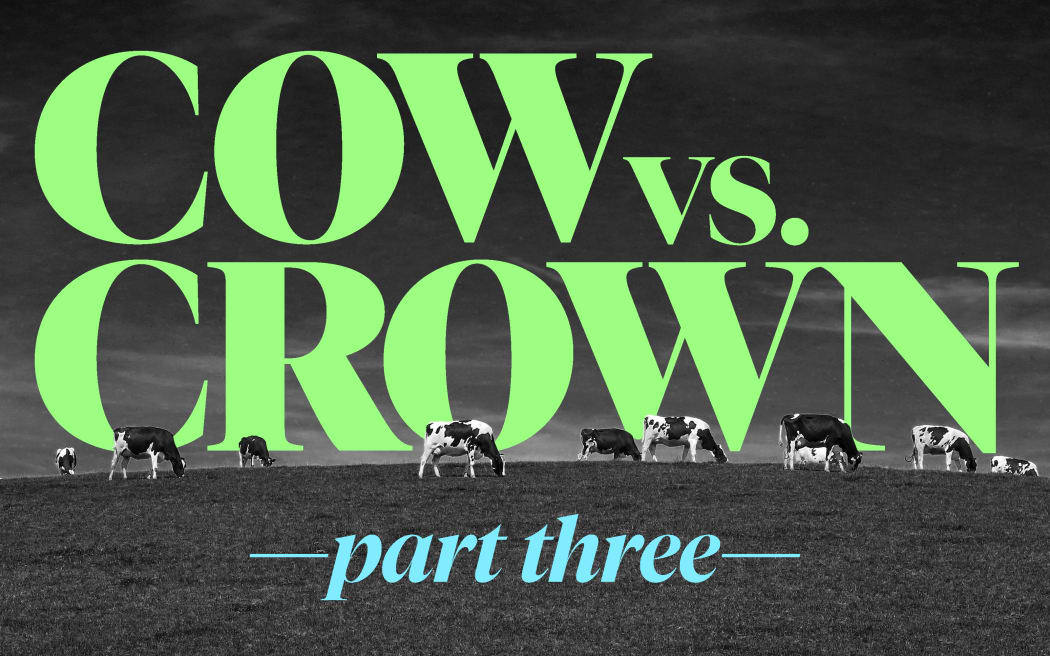Agriculture contributes more to global warming than any other industry in Aotearoa. Yet attempts to rein in the sector’s emissions have repeatedly fallen short. Kirsty Johnston investigates how a “world-leading plan” was born, and how it fell apart. This is part three: Backtrack. Why farming reneged on its deal to cut emissions.
When it came time to launch the New Zealand farming sector’s scheme to combat global warming in June 2022, the industry’s plan was to present a strong, united front at a celebratory event in Wellington.
A group of leaders from industry groups, the farming lobby, and Māori agriculture would sit in a row of stools on stage, facing the audience, and proudly announce that after nearly three years’ work they had created a “robust and credible” system to price farming’s greenhouse gas emissions.
It was a big deal, a “world first”, they would say, and most importantly, everyone - even the staunch farmers’ lobby group, Federated Farmers - had signed in agreement on the report’s recommendations.
But on the day of the launch, things didn’t go to plan. The Federated Farmers logo was on the big screen, but its president, Andrew Hoggard, was not on stage. Hoggard, a dairy farmer from Manawatū, instead sat in the crowd as the launch played out, arms folded, only reluctantly leaving his seat to answer questions from media about whether Federated Farmers fully supported the proposal.
“We’ve signed up to it,” Hoggard said. “I don’t think it’s quite perfect just yet. I think the bones are there. There’s more work that’s needed.”
“Obviously, we would love that there wasn’t a price at all, but here we are.”
Later, it turned out that Hoggard hadn’t wanted to sign the final report at all. At the time, the Federated Farmers board overruled him, confident the industry plan would be better than the alternative, which was for farmers to be put in the Emissions Trading Scheme (ETS) alongside other polluting industries, and be subject to the market price for greenhouse gas credits.
The more progressive members of that board also argued that taking responsibility for their part in causing climate change was the right thing to do, and that it was up to them to show leadership, in the hope they could bring farmers along with them.
Then-Prime Minister Jacinda Ardern shared that hope. She believed that an industry-led plan would be more likely that a government-imposed one to get the support needed to reduce agricultural emissions, which make up half of New Zealand’s greenhouse gas pollution. Ardern was determined to get a deal done, and for a time it seemed she would, even if it was through sheer force of will alone.
Looking back, however, Hoggard’s passive protest stands out as a giant red flag - a kind of man-sized portent. As a farmer, Hoggard was not on board with the plan, and as it turned out, neither were many of his farming peers. When the scheme’s recommendations were not immediately accepted by the government - which instead drew up its own version of the plan - Federated Farmers reneged on its commitment, swiftly followed by the rest of the industry partners.
A year on from that launch, the agricultural emissions pricing plan exists in name only, its future tenuous, at best. Environmentalists are despondent. Farmers are furious, both with regulators and the sector leaders who worked on the plan. Industry goodwill towards the government has largely been replaced with hostility and suspicion. And agricultural emissions are once again political grist for the electoral mill, with further delays likely, even as experts warn we don’t have time to waste.
The plan’s failure marks the third time in 20 years that an attempt to regulate farming’s contribution to climate change has faltered. What went wrong? Were farmers ever on board at all? Was the Government simply naive to believe they would ever agree to regulation?
This RNZ investigation uses background interviews with industry insiders, officials, and experts, as well as documents obtained under the Official Information Act, such as cabinet papers, government reports and ministers’ diary entries to tell the inside story of how a once-promising idea fell apart. You are reading part three - you can go back to part one here and part two here.
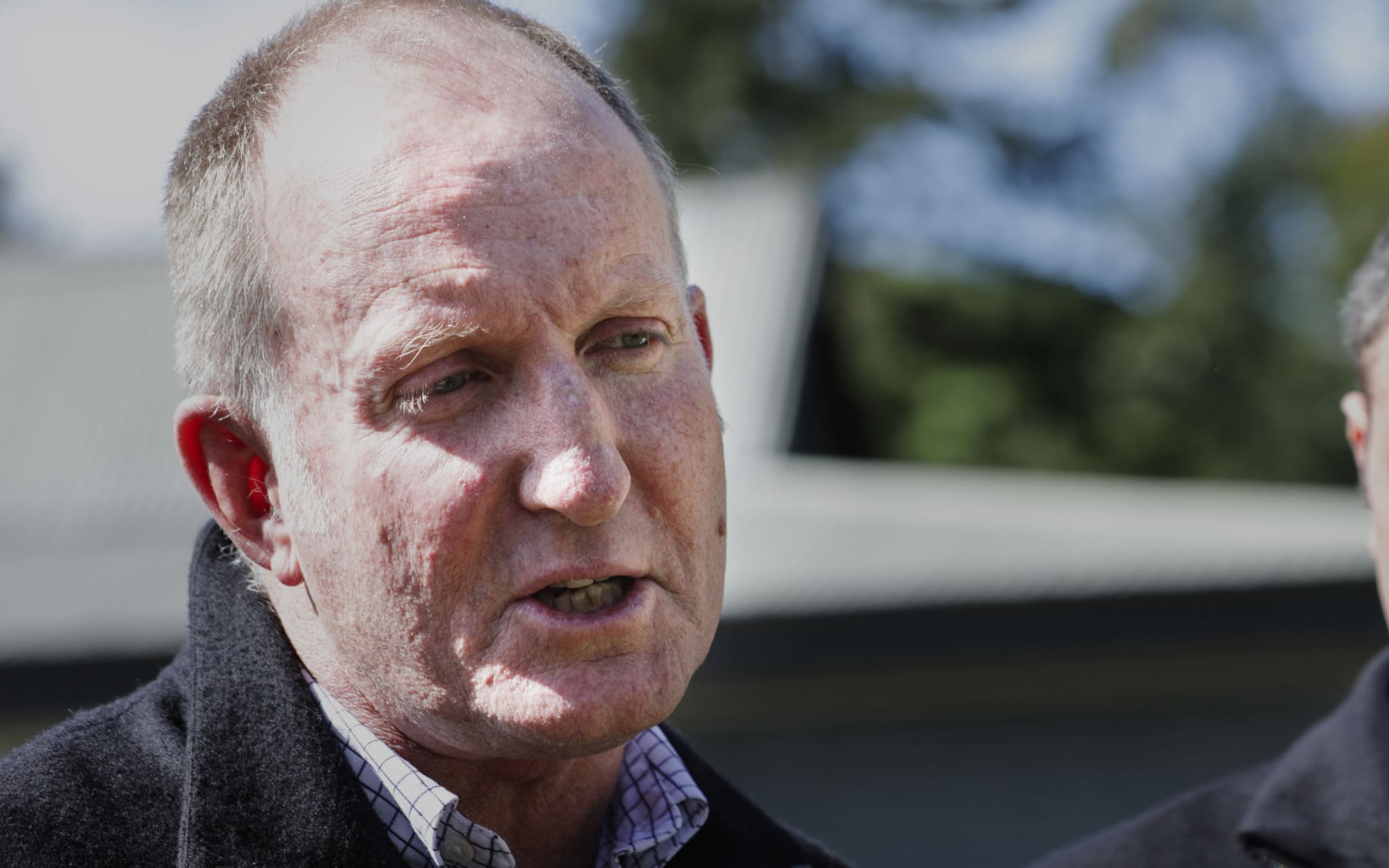
Beef+Lamb backed out of He Waka Eke Noa immediately after its chair Andrew Morrison was voted out of the role. Photo: RNZ / Richard Tindiller
This is the way the government’s climate change deal with the agriculture industry fell apart: not with a bang, but with a press release. It was April 2023, and for the preceding four months, the pan-agriculture climate change group He Waka Eke Noa had heard almost nothing from Parliament about its plan to introduce farm emissions pricing. In contrast with the previous five years, when the group’s chair Mike Petersen had enjoyed direct access to then-Prime Minister Jacinda Ardern, the new prime minister, Chris Hipkins, did not seem engaged, particularly after two cyclones caused widespread damage across the North Island that summer.
Just the previous December, the government had launched its final plan to reduce pricing, a modified version of industry’s own proposal. After intense backlash from its “partners” in industry, Ardern had eventually backed down on most of the changes it had made, and instead offered agriculture a very generous deal that would see farmers pay the lowest price possible and have access to incentive payments for technology and planting trees. Despite the concessions, industry groups remained dissatisfied, and continued to argue for more lenient conditions, and more financial support.
Farmers, in turn, were unhappy with their industry leaders for, seemingly, even considering a pricing plan. They began to take action against those they felt were responsible. In April 2023, one of the most committed leaders in the He Waka Eke Noa partnership, Beef+Lamb chair Andrew Morrison, lost his role after being voted out. He was replaced by Southland farmer Geoffrey Young, who vowed to stand up for the “disenfranchised and unheard farmers”. Young, unlike Morrision, was supported by the lobby groups Groundswell and Southland Federated Farmers, both vehement anti-pricing proponents.
After Morrison’s exit, on 18 April, Beef+Lamb issued a press release saying it was effectively backing out of the emissions deal. It said it wanted a “staged implementation” of the pricing framework, rather than the legislated 2025 implementation it and the other parties had agreed to five years earlier. With Beef+Lamb’s announcement, the government-industry partnership, already flailing, was now effectively dead in the water.
Rumours began to surface that the government, knowing it was out of time to introduce pricing legislation, was considering introducing a fertiliser tax instead. The National Party seized its opportunity, saying it no longer backed emissions pricing, despite earlier pledging bipartisan support. A few weeks later, at Fieldays, National announced its own farming emissions policy: farmers would not face a price until 2030, and if elected, National would review the targets for reducing methane. National’s climate spokesman Simon Watts said the party would look to meet emissions targets by targeting transport and energy creation, rather than agriculture.
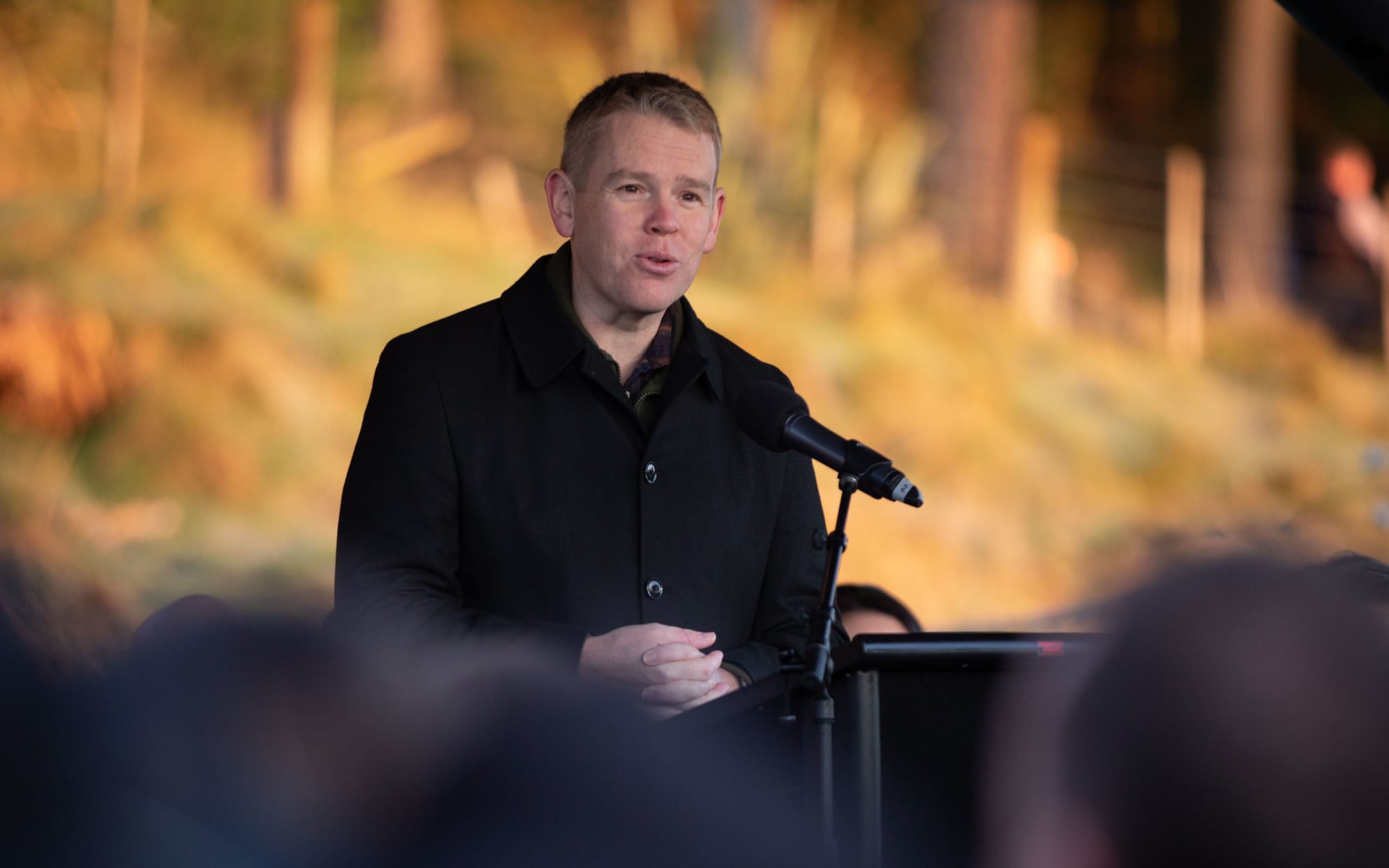
PM Chris Hipkins speaking at the opening of Fieldays in June. Photo: RNZ / Angus Dreaver
Prime Minister Chris Hipkins immediately accused National of “treating the climate with contempt.” Hipkins also made an appearance at Fieldays, where ruled out a fertiliser tax. After meeting with farming leaders, Hipkins said Labour would rather continue working with the He Waka Eke Noa partnership instead.
"I think we can get a way forward, I don't think we're that far apart,” Hipkins said. Subsequently, a statement from the partnership said they were still negotiating on “equity, timing and price levels.”
On Friday 18 August, Agriculture Minister Damian O’Connor outlined what he was calling the government’s “final plan” to reduce emissions from the sector. The plan was largely unchanged from the version outlined in December 2022, with the government once again committing to price emissions at “the lowest possible level”. Farms would have to start reporting their emissions from October 2024 and paying for them from October 2025, with new legislation needed to account for the further delay.
The most significant difference in O’Connor’s latest plan was that this time, Climate Change Minister James Shaw was in open disagreement. The Green Party, which Shaw co-leads, would clearly not support what was being proposed. The only chance, then, for O’Connor’s proposal actually coming to pass was if Labour won a renewed absolute majority in Parliament. An extremely unlikely scenario.
Immediately after the announcement, Federated Farmers said it didn’t support the plan either. Neither did Beef + Lamb, nor Dairy NZ.
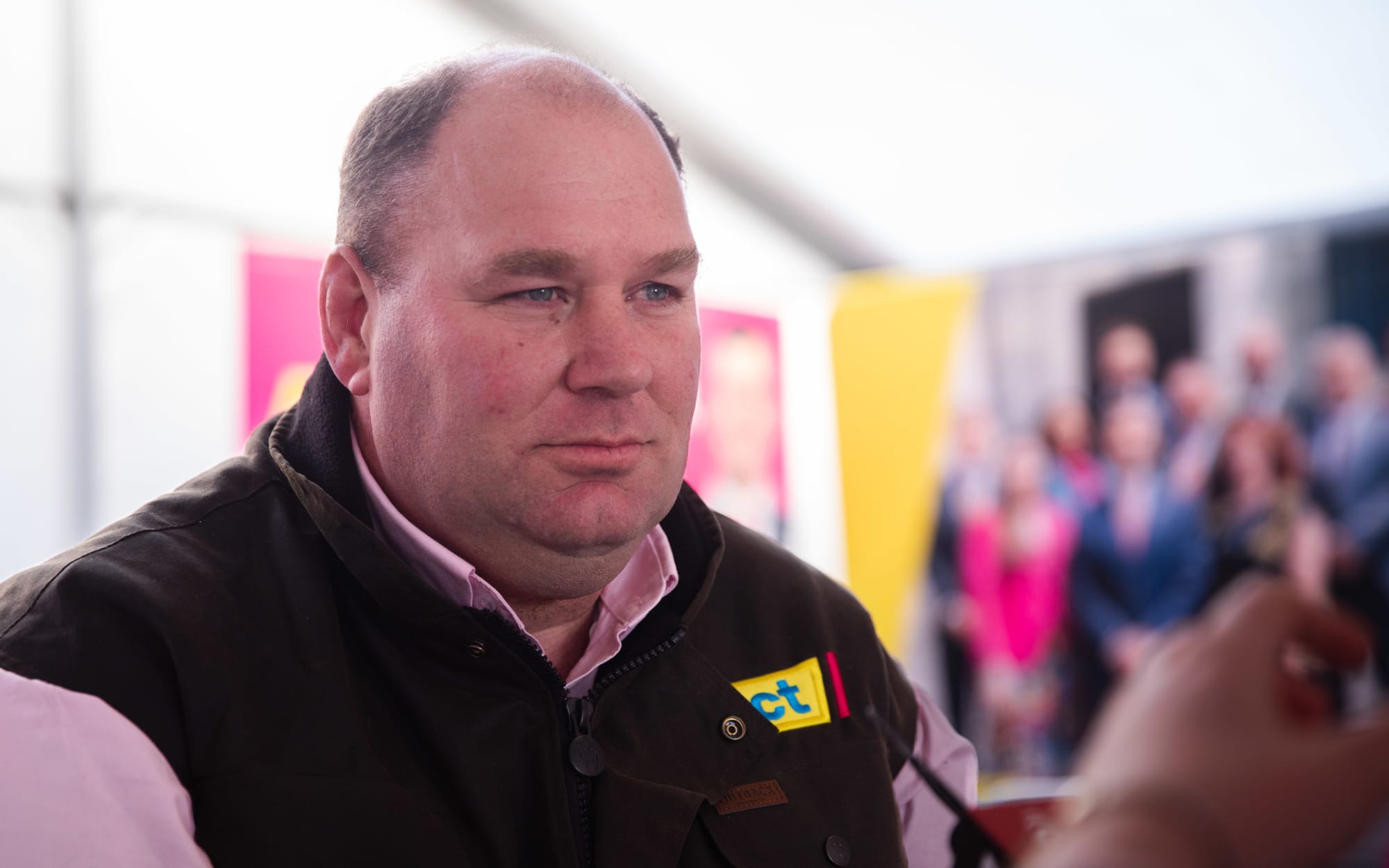
Andrew Hoggard, the former president of Federated Farmers, is now a candidate for the Act Party. Photo: RNZ / Angus Dreaver
Depending who you ask, the failure to get the pricing plan over the line prior to the election is the fault of industry, or government, or both.
Some of the He Waka Eke Noa partners say it was the introduction of methane targets in the Climate Response Act as early as 2019 that saw the industry trust in government begin to fray. Federated Farmers, in particular, vehemently opposed the idea that emissions should be reduced by 10 percent by 2030, and began to push back about their inclusion in any industry plan as soon as the law was passed.
Others say the turning point came when officials who had been working with the group for nearly three years told partners that neither the Ministry for the Environment nor Primary Industries would be signatories to the proposal. Until that point, some partners say, they believed the partnership was exactly that - a three-way deal with industry, Māori and government - and the recommendations put forward would be accepted whole. “If we’d known the government wasn’t going to sign - would we really have them in there the whole time?” says Hoggard, who recently stepped down from his role with Federated Farmers to run as a candidate for the Act Party. “Maybe instead we would have had the spinal fluid to put something forward that we thought would work, regardless of whether we thought the government would agree to it.”
Many farmers - whether they’re the industry representatives or the people on the ground - say it was the government’s version of the plan that tipped the balance, particularly the clumsy rejection of the sequestration payments. In their view, Ardern had something unprecedented “gifted” to her by the entire agriculture industry, and she turned it down. “The government didn’t understand how finely balanced that proposal was, that every line had been gone over,” says farming commentator Andy Thompson. Most farmers saw the system like a ledger, Thompson says, with emissions created on one hand, and absorbed on the other. “When you took that sequestration away, farmers said: ‘This is nothing more than a tax’. And that’s when they lost the room.”
Others have a slightly more cynical view, arguing that, all along, Federated Farmers had one foot in, and one foot out of the partners’ tent. When the sequestration payments didn’t go their way, it simply provided an obvious chance to renege on their commitments - an easy way out.
Regardless, almost everyone agrees the final nail in the coffin was when the government’s own modelling of the impacts proved that concerns raised by the sector were based on data. The modelling showed there would be a roughly 21% reduction in lamb and wool production, and a 36% drop in beef. The impact on dairy was lower but still significant, with a 5% drop in milk solids. Effectively, it made it untenable for industry bodies, particularly for Beef+Lamb, to continue to support the pricing plan, because it meant signing up to financial losses for their own members.
“We never would have supported a proposal that would do that,” says former Beef+Lamb chair Andrew Morrison. “We had already modelled those figures ourselves and that’s why we said the sequestration and the right emissions price was so important, because otherwise it wouldn’t work for us.”
Environmentalists, however, say they don’t believe that agribusiness ever had any intention of agreeing to emissions pricing, and the notion of “finding consensus” was simply another delay tactic employed by industry, which the government naively fell for.
“Why would these industries agree to pricing?” Greenpeace chief executive Russel Norman says. Agreeing to pricing was to cede control to a regulator, and therefore to admit there was pollution they were not paying for, Norman says. “The best thing for them is that things continue as they are, where everyone else cuts emissions, and they don’t have to.”
Ecologist Mike Joy says for the dairy industry in particular, low emissions farming would require a total shift in mindset. “For 30 years dairy has run a system optimised for maximising production volumes - one that requires as much milk as possible. Ironically, that system was incentivised by the government, who are now saying it’s the wrong approach.” For companies like Fonterra, reducing production posed a business risk, including the possibility of stranded assets, like milk processing factories, and a possible drop in profit if the industry was unable to sell lower emissions milk at a higher rate.
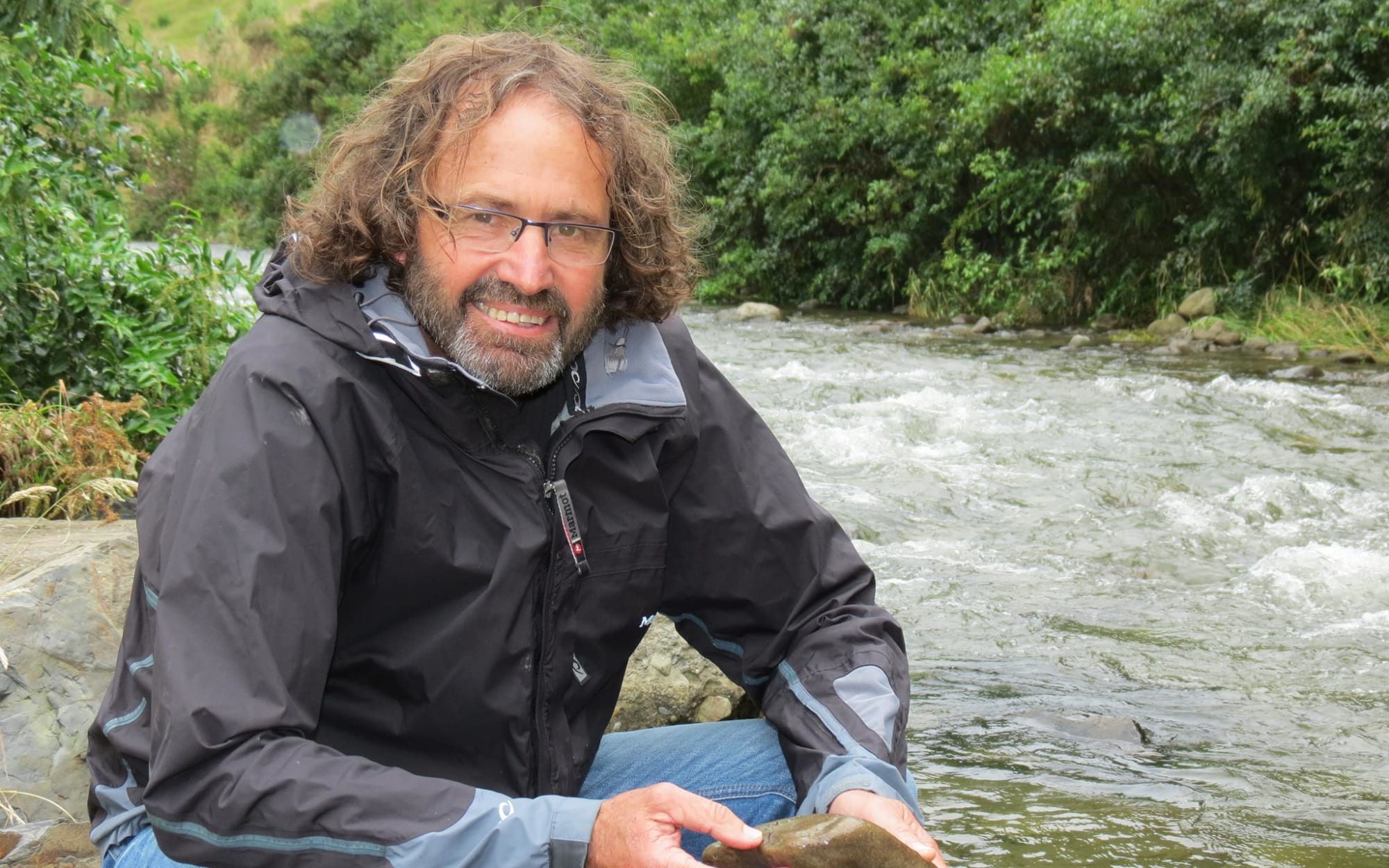
Ecologist Mike Joy Photo: supplied
And even if industry leaders were genuine about implementing a price, the notion of a sector-wide “consensus” was something of a pipe dream, briefing documents show. In mid-2022, officials warned ministers there was disagreement across the agriculture sector on the “need, urgency and quantity of emission reductions” and how to achieve these. Research from the Climate Commission had found that while half of farmers surveyed agreed they should reduce on-farm emissions, the other half disagreed. When asked what measures they could take, some respondents gave genuine answers, like improving efficiency or changing stocking ratios. But in the comments, the anger from others was visceral. “This is just a government driven way of taxing farmers to please the UN. No real science behind it,” one comment read. “I will not agree with any form of tax,” said another. “I honestly believe the whole idea is rubbish.” Others wrote that instead of choosing mitigation, they would retire, or move off the land: “My farm is for sale, I've had a gutsfull of all this shit.” Other comments were more reasonable, but spoke to the complete lack of assistance farmers had received to get their heads around the changes. “At 65 some of these things are way out of our expertise range. We are just farmers, not computers or technical people.”
Many of the partners agree that in hindsight, they could have done more to help farmers and growers understand why reducing emissions was so important. “Doing a tour of Aotearoa would have helped people understand what the proposal meant for them,” says Traci Houpapa, chair of FOMA, the Federation of Māori Authorities. “Consultation works best when people have a good base understanding, and that's where the partnership could have done better.” Instead, industry groups largely relied on selling the He Waka Eke Noa proposal as the lesser of two evils. Repeatedly, the message was: “It’s better than going in the ETS.”
Equally, however, critics say the government could have done a better job of selling its plan - not just to farmers, but to the public generally. Although Treasury advice suggested some farms would have to be allowed to fail, the government was never going to let that happen at scale. It did not want to encourage widespread, rapid change in land use. And the tax wasn’t going to drastically increase the price of food - in fact a Newsroom analysis found that the impact of the pricing scheme would come to $0.14 per kilo of beef, $0.09 per kilo of lamb and half a cent per litre of milk by 2030. In fact, the scheme wasn’t going to “cost” the country at all. According to a cost-benefit analysis, under the partnership model there was a net benefit of $175 million to New Zealand. And then there were the flow-on effects - better water quality, enriched biodiversity from more planting, improved animal health, and in some cases, higher profits.
“We are very good at talking about the cost, but people forget there is also a benefit to not polluting,” says climate change commentator Rod Oram. “Instead, we just end up with this dialogue where farmers think townies are after them. To me, there was a chronic breakdown in what should have been a national conversation about how we make our economy more productive with higher environmental benefits.”
Part of the difficulty, however, in having such a conversation is that many of the facts are politically unpalatable, particularly in an election year. Neither politicians, nor industry, want to say publicly “we have some bad farmers,” even if they admit it to themselves in private. No one wants to make the argument that perhaps, if those farmers can’t afford to pay for their pollution, then they shouldn’t be in business. Further, no one seems ready to consider that if we want to meaningfully cut emissions, barring a technological breakthrough, New Zealand will have to reduce meat and milk production at some point, and to farm other things instead. Because to acknowledge that would be to concede that our main export industry is bad for the planet, and we don’t have a back up plan.
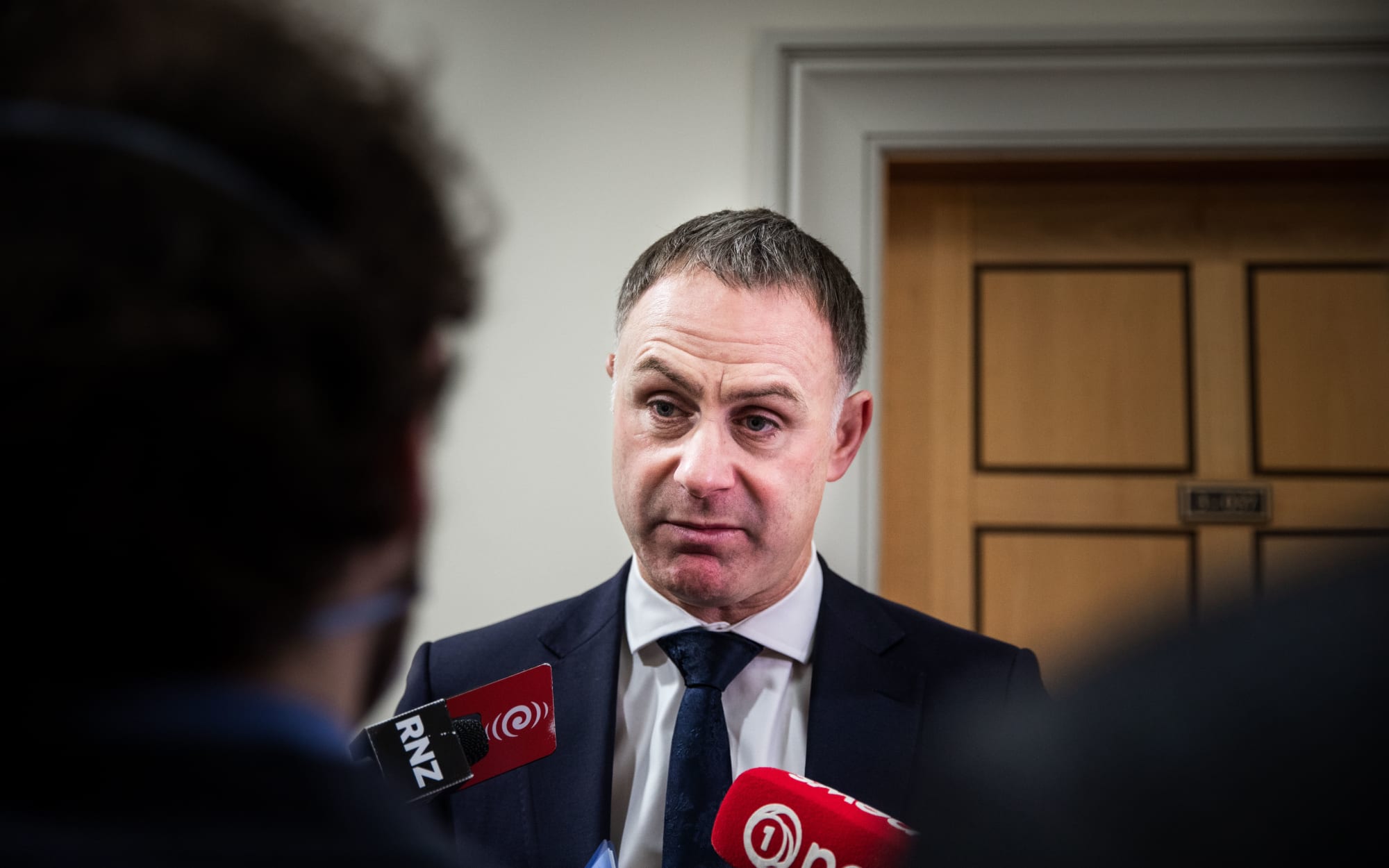
National's climate spokesman Simon Watts Photo: RNZ / Samuel Rillstone
For now, the emissions pricing scheme remains in a holding pattern. Each party will take a different version of the policy to the October 2023 election - National with its five-year delay, the Greens with a cap-and-trade scheme, to ensure more certainty around emissions reductions. Act wants to match our emissions targets to our five closest trading partners. And Labour says it would have its rather generous pricing plan in place by the end of 2025, if only it could get re-elected with an absolute majority. (As far back as the 2011 election, Labour’s policy was to include agricultural emissions in the ETS within two years.)
Meanwhile, there is growing concern that New Zealand has missed its window to capitalise on being first in the world to regulate farming emissions reductions. In the six years since Labour was first elected, the global picture has shifted rapidly. Other farming nations have brought in ambitious climate targets on agriculture, including Ireland and the Netherlands. At the same time, the commercial market has shifted, with companies like Nestle, Mars and Danone, which buy significant quantities of New Zealand milk powder, announcing they will only buy from suppliers who achieve significant emissions cuts. Their policies are driven by consumer preferences, as more customers demand lower emissions food. Offshore supermarkets, like British multinational Tesco, also have emissions targets.
For progressive farmers, watching their industry leaders cause further delays on global warming has proved extremely frustrating. Like any profession, farming is a broad church, and there are at least as many innovative farmers as there are laggards - but the laggards also tend to make the most noise. In the meantime, the more innovative farmers are quietly getting on with making changes where they can. Some local companies, such as meat processor Silver Fern Farms, or milk company Synlait, have employed their own programmes to encourage the switch to low emissions. Silver Fern chief executive Simon Limmer says the transition to a low carbon economy is an opportunity to create “new forms of value” and to position farmers as climate innovators. It has incentivised sequestration, and invested in methane reduction technology. “Our consumers are our North Star, and we see a need to continue empowering our farmers to keep pace with increasing customer expectations for more sustainably produced, and processed, red meat,” Limmer says.
Still, questions remain over whether change will happen fast enough to retain New Zealand’s “world-leading” claim on climate efficiency. In a recent interview, Climate Commissioner Rod Carr warned against complacency, saying while New Zealand was once the most efficient, other countries, who have different farming practices (ie animals in barns) are quickly catching up. “We may be best in class, but in a class that is rapidly changing,” Carr said.
There are still signs of climate denialism firmly rooted in parts of the sector. Last month, while Prime Minister Chris Hipkins was meeting with the He Waka Eke Noa partners at Fieldays, Groundswell was holding its own meetings, with American scientist Tom Sheahan, who falsely claims methane and nitrous oxide are “irrelevant” gases and not responsible for global warming. A flyer announcing his visit read: “There is no climate emergency.”
Fifth generation farmer and freshwater ecologist Alison Dewes says that kind of messaging is deeply unhelpful. Better to follow the lead of numerous innovative farmers who are already well on the way to having profitable, resilient, lower emissions businesses, she says.
“Climate volatility is going to hit farmers hardest. Look at Cyclones Hale and Gabrielle - how they've scarred the heart of rural businesses,” Dewes says. “That was a wake up call. Change has got to happen, and it's time to stop scrapping. It's time to get on with it together.”

The free trade agreement Damian O'Connor signed with the European Union could force the matter on agricultural emissions. Photo: RNZ / Samuel Rillstone
The somewhat unexpected post-script to the emissions pricing story will come later this year, when the government moves to introduce into legislation its Free Trade Agreement with the European Union (EU).
The deal, signed by O’Connor in July, was the first of its kind for the two parties, in that it commits both to their climate commitments under the Paris Agreement. That means if New Zealand can’t reduce its greenhouse gases by 30 percent by 2030 - a very real possibility at this point given its current trajectory - it could be sanctioned, or cut off by the EU. Among those most impacted would be the farmers who export meat and dairy to Europe.
Journalist and commentator Bernard Hickey, who spied the climate targets hidden in the dense text of the trade document, described the deal as a kind of “back door” climate policy. “It’s handcuffing farmers to climate targets in a way they weren’t expecting,” Hickey said. “And I don’t know if anyone has really realised what it could mean yet.”
It’s unclear if Parliament will actually legislate for the trade deal before the election. If it doesn’t pass in time, a National-led government could try to revisit the climate targets in the deal. That would assuage the parts of the industry staunchly opposed to cutting emissions. But it might risk access to a significant trading partner, and take away one more claim to being the best in the world.
